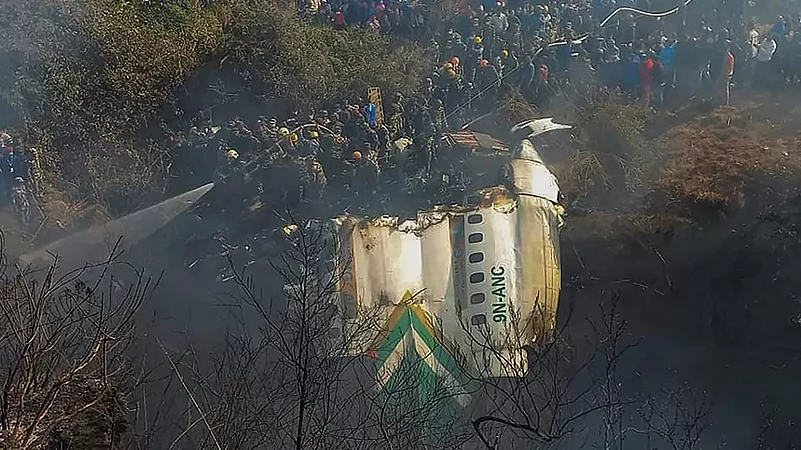Experts have said that system failure or human error could have been behind the air crash in Nepal's Pokhara on Sunday that killed at least 68 onboard.
A passenger plane of Yeti Airlines with 72 persons, comprising 68 passengers and four crew members, onboard crashed in Pokhara as it approached the airport for landing. Sixty-eight bodies have so far been recovered.
There were no adverse weather conditions in Pokhara at the time of the crash. A video that captures the final moments of the plane shows a clear and sunny sky. The video also shows the plane swerving wildly to one side as it approached the airport for landing.
In the absence of any adverse weather conditions, the experts have said that mishandling, malfunctioning of aircraft system, or pilot fatigue could be among the factors that caused plane crash. They also said the exact reasons that led to the accident will be known only after a detailed investigation.
The Saturday's Pokhara crash comes within a year of Tara Air crash in Nepal's Mustang region that killed all 22 onboard.
An aircraft accident investigator told PTI that going by one of the video clips, the nose of the aircraft slightly went up and the wings drooped to the left side before the crash happened and there could have been a stall.
While the exact factors for the crash will be known only after completion of the detailed probe, initially, it looks like the possibility of mishandling by the pilot or malfunctioning of the plane's angle of attack system, said this expert to PTI on the condition of anonymity.
The person, who was involved in multiple aircraft accident probes, was also closely associated with the investigation into the Calicut plane crash in 2020.
A senior pilot at a leading Indian carrier, who did not wish to be quoted, told PTI that following procedures is paramount when flying to terrains like that in Nepal. The pilot, who also flies to Nepal, said multiple factors, including pilot fatigue, could have led to the crash.
While flying an aircraft, there is decision-making at every step and a pilot needs to have good rest. So, there could have been pilot fatigue and also the possibility of procedures not being followed, the pilot added.
A pilot with a regional carrier, who has been flying ATR planes for nearly two decades, opined that the particular aircraft could have suffered a stall or there could have been a pilot error. The factors that led to the crash will be clear only after the completion of the investigation, the pilot added.
"The aircraft involved is a 15 year old ATR 72-500 with registration number 9N-ANC and serial number 754. This aircraft was equipped with an old transponder with unreliable data. We are downloading high resolution data and verifying the data quality," flight tracking website Flightradar24 said in a tweet.
(With PTI inputs)


























